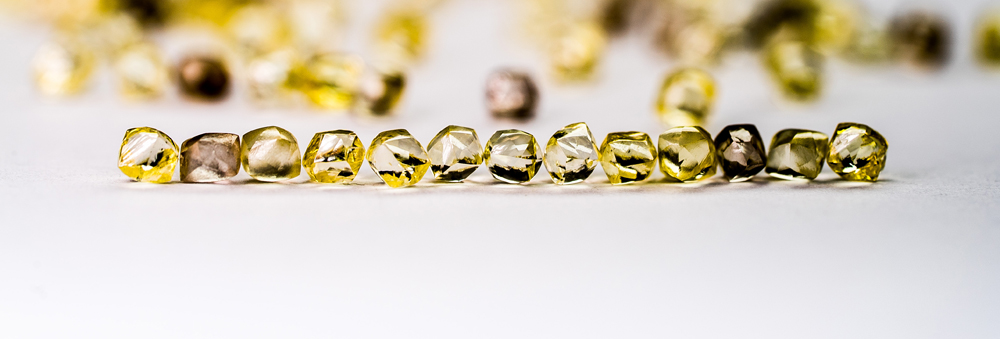Natural, Uncut Diamonds for Tool Manufacturing
You hear the words “uncut diamonds” and your mind instantly goes to a place of imagination. Uncut diamonds have a reputation of being some of the most popular types of diamonds to buy. And manufacturers of diamond tool utilize these diamonds too. As an international supplier of uncut diamonds, Lieber & Solow are very familiar with the marketplace for uncut diamonds. And we are well aware of their fluctuating values and how the market handles them since we are established diamond dealers. A diamond dealer is a professional who buys, sells, and trades diamonds. The work of a diamond dealer can span various stages of the diamond supply chain, from sourcing rough uncut diamonds to dealing in polished stones.
For more information about our rough diamonds for sale, please reach out to us.
When you do, we can discuss our various pricing options available, as well as note any details regarding the diamonds you are interested in purchasing. Let’s take a deeper look at uncut diamonds and their importance in the diamond market. You are in safe hands when you turn to Lieber & Solow for all your diamond needs!
What Are Uncut Diamonds?
First, let’s get into what uncut diamonds are. An uncut diamond is simply a stone that has not been shaped by a professional diamond cutter. Nor has it undergone any sort of polishing or cleaning. Rough diamonds and raw diamonds are other ways to say uncut diamonds. None of those diamonds have been cut yet.
When a stone is mined, a determination is made on whether it is suitable for jewelry or not. This determines if it is being cut down the line. If it is of high enough quality, then it will be cut for jewelry. Any stones of lower quality are typically used in industries for their physical properties, such as for diamond tool manufacturing. These uncut diamonds offer a hardness that you cannot find anywhere else, which is why they are used for their hardness.
What Determines the Value of Uncut Diamonds?
There are certain factors that play into the value of uncut diamonds. The clarity, color, shape and carat all play big roles in determining whether or not the uncut diamond is valuable. Let’s take a closer look into some of these factors.
Clarity
The clarity of an uncut diamond refers to how many natural flaws are visible in the diamond. Uncut diamonds that have only a few visible inclusions are much more valuable than stones featuring flaws more prominently.
Color
When a new diamond is mined, it often has a yellow or brown tint. The stronger that yellow or brown tint is, the less valuable the diamond is. Diamonds that have a less visible color are more valuable. For what it is worth, colorless diamonds are very, very rare. Which is why those types of diamonds are very expensive.
Shape
The shape, or cut, of the diamond is not a typical valuation factor. But when it comes to rough, uncut diamonds, then the shape matters. Does the shape allow for a big, polished stone to be cut out of it? Or will multiple cuts be needed? So the shape influences the cuts, even if the color and clarity are good, because the cut diamond may be smaller.
Carat
Lastly, we come to the carat of the diamond. The carat is what measures the weight. So, as you would expect, the bigger the stone, the more rare and thus more valuable.
However, when it comes to rough uncut diamonds, then the correlation of high carat and high value doesn’t always mesh. That is because the two previous factors carry more weight when it comes to the value. A rough diamond with a lot of visible flaws will need to be cut and likely cut often. On the other hand, a smaller carat diamond with less flaws will need to be cut less. Thus is more valuable, since cutting a diamond lowers its value.
When you cut a diamond, then you may also be affecting the clarity. Which in turn also affect the price. So once again, a higher carat diamond may be less valuable since cuts need to be made.

Importance of Cutting & Polishing Uncut Diamonds
Uncut diamonds embody the raw, untouched beauty of nature—full of potential but yet to reveal their full brilliance. In their natural, rough state, uncut diamonds have not been shaped or enhanced by any tools or techniques. While they can be captivating in their primal form, transforming them into the dazzling gems we associate with fine jewelry requires both cutting and polishing.
The process of cutting uncut diamonds plays a crucial role in unlocking their inner sparkle. A diamond’s cut affects its proportions, symmetry, and light performance—all of which determine how much brilliance, or “fire,” the stone will display. Uncut diamonds, once expertly cut with ideal proportions, can return light more effectively, significantly boosting both their visual appeal and market value.
Polishing is equally important in this transformation. While uncut diamonds have a naturally rough surface that scatters light, polishing refines the surface to allow light to enter and reflect within the stone. This internal reflection creates the iconic sparkle that polished diamonds are known for. Without this finishing step, even the best-cut uncut diamonds would appear dull and lifeless.
Because uncut diamonds often feature irregular shapes and uneven textures, they initially lack the brilliance of finished stones. However, the extent and quality of cutting and polishing ultimately determine the final beauty—and the final price—of each diamond.
